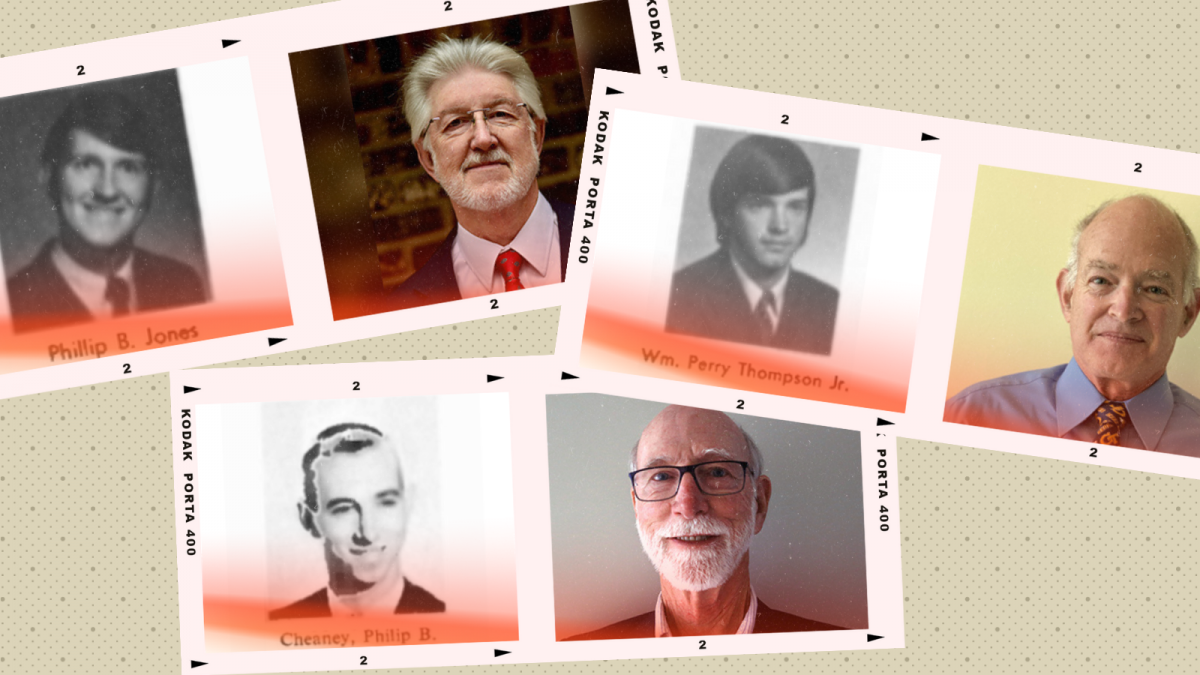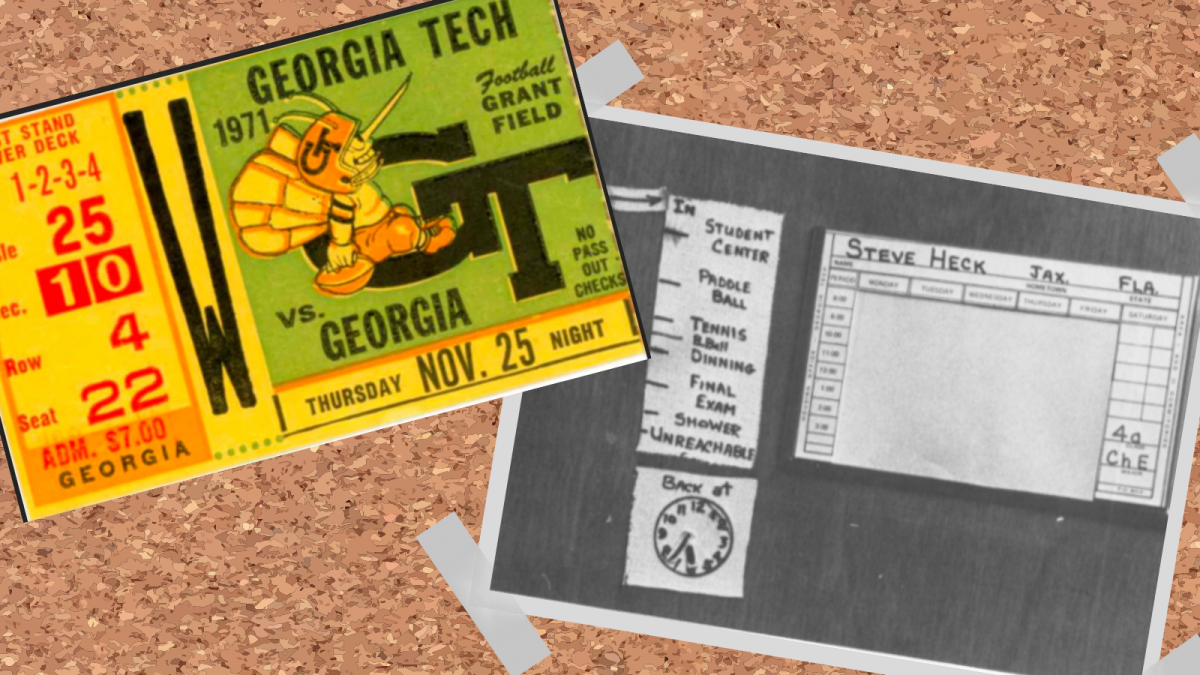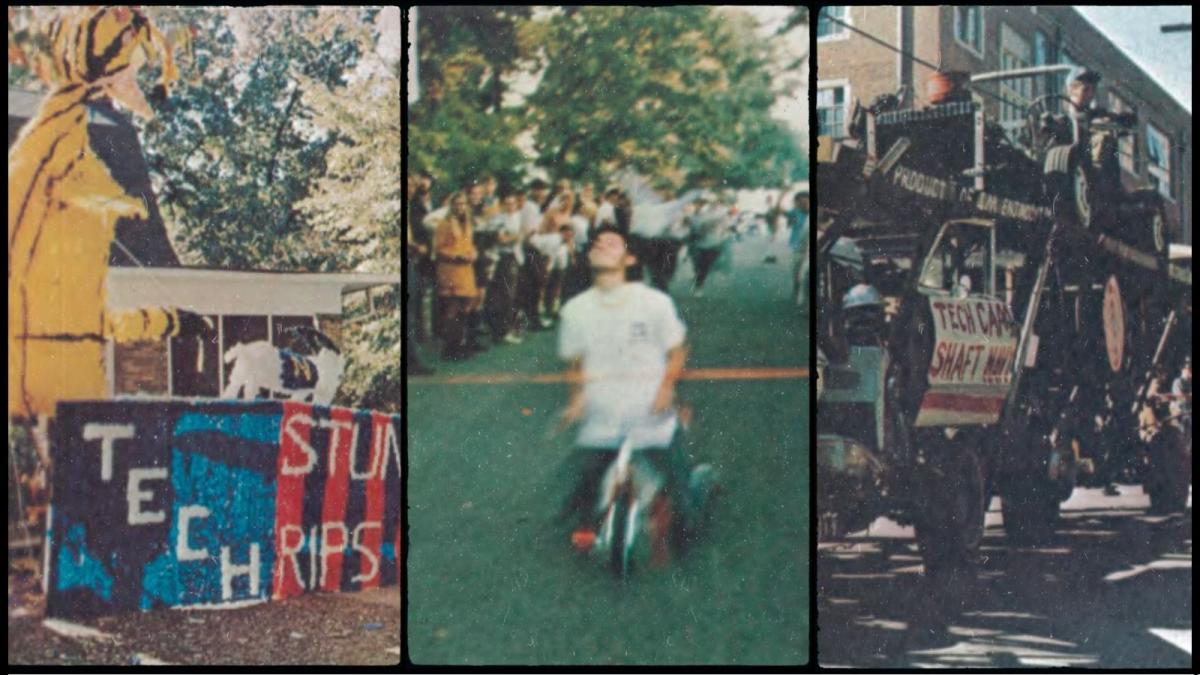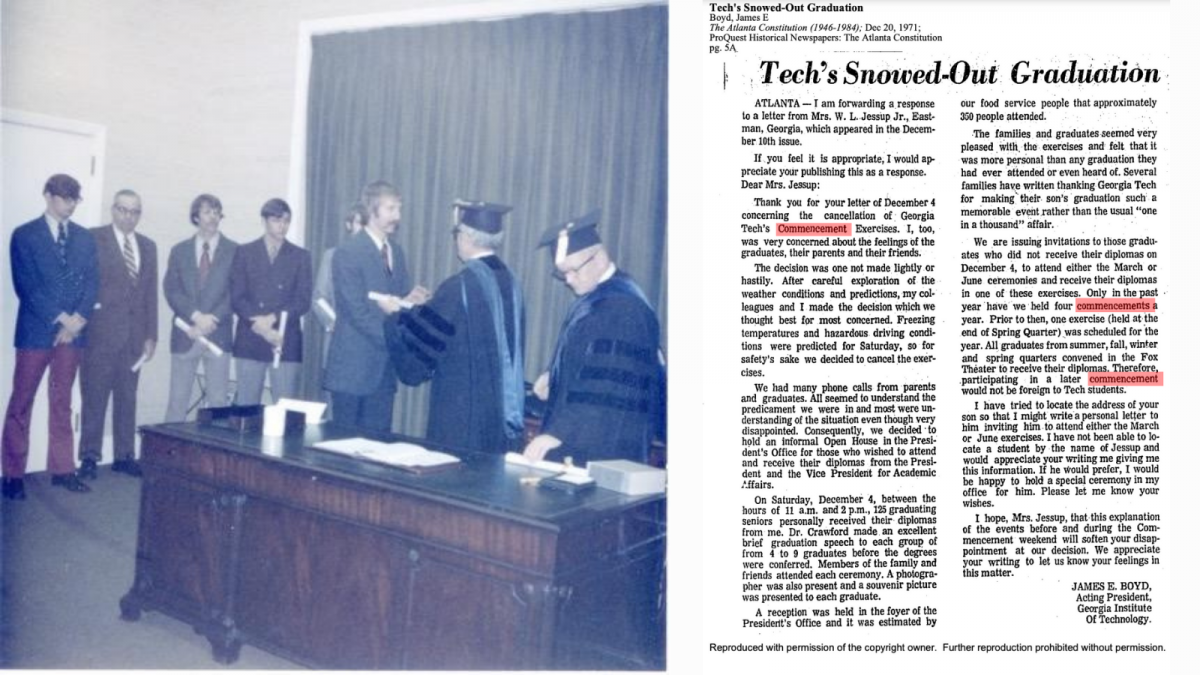Philip Cheaney and Phillip Jones were two of the first three graduates from the Georgia Tech School of Economics in 1971. So, we asked them, how does their experience at Tech hold up after 50 years?
Over a series of emails and a group interview, the two men reflected on what has changed the most at Georgia Tech in the past five decades (such as drownproofing classes and the lack of calculators) and what has stayed the same (like that feeling of relief at graduation and the enduring value of a Tech degree). They also shared their best advice for students graduating from the school today.

Academics, social life, and early computers
Cheaney first enrolled at Georgia Tech in 1963. Then, he left to join the Army and returned in 1970 to complete his degree.
Jones enrolled in the fall of 1967. Along with the third 1971 economics graduate, William “Bill” Thompson Jr., the men began their studies in different programs.
However, when the opportunity arose to get a bachelor’s in economics instead of industrial management (IM) and electrical engineering (EE), Cheaney and Jones took it for the same reason: they wanted something different. Something a little broader in scope than the IM degree and a little less technical than the EE degree. The real-world applications of the economics courses appealed to them.
Their classes were small but difficult. “I always felt like Tech, in some sense, was a survival experience,” said Jones. On campus in the ‘60s and ‘70s, the men remember mandatory gymnastics classes for first-year students, drownproofing exercises in PE, and taping their class schedule to their dorm room door so friends could find them (as well as fielding phone calls for friends in the shared dorm hall payphone). They ate burgers at the Varsity and caught movies at the Fox Theater and Friday night films for 10 cents at the EE Auditorium (Jones was living on about $300 a quarter at the time). They went to football games in suits and ties and walked to parties with their friends afterward, where instead of passing an aux cord, the fraternities often hosted live bands.

Still, they did have computers in their classes back then, even if it was the earliest versions of them. “One of the selling points of Tech was you didn't have to take a foreign language; you could take a computer language,” said Jones. They would print their programs on physical punch cards, compile them by hand, and take them to the mainframe computer at the front desk to let them run overnight. “You’d get your results back in a day or two,” he explained.
Class registration, which took place in the old Naval Armory building on campus, also required physical cards. “You would be given a time slot that you could go in, and you would go to all these different tables. And if a course was available, you would get one of those cards,” said Jones. “It was difficult because those courses that you wanted might fill up, or at least the preferred times, and you had to sit around and wait and see if they would bother to open up another section of that course ... That was a difficult part of registration for classes back then,” he said.
Another hassle students these days don’t have to endure?
“One of the most onerous things about calculus was doing all the long division by hand or a slide rule, not even a handheld computer,” lamented Jones. “You know, square roots, all those things, it just was an onerous process. You got tired of doing the detail work and lost sight of the concept that you were trying to learn. The college experience would have been a whole lot different to be able to have a machine just to add, subtract, multiply, and divide.”

A changing campus and new opportunities
The Georgia Tech campus has also changed drastically since 1971. Dorms used to only exist along Techwood Avenue, and a tunnel used to run under the interstate on 5th Street where the men would walk from their friends’ houses to Georgia Tech football games. The size of the student body is also much bigger (grown from around 5,000 in the 1971 Blueprint to around 40,000 today) and has a much larger population of female, minority and international students.
In addition, “there seems to be a recognition of a lot more opportunities these days,” said Jones. “I never even thought about studying abroad; that just never was anything that I gave any consideration to.”
Cheaney added that the course offerings in economics had also evolved since he was choosing them in the old Naval Armory 50 years ago. “If you look at the course descriptions in the offerings now, it's sort of totally different than the whole economics program [I did]. I was looking at those, and I said, 'yeah, I'd like to take this one, this one, and this one' … Whether I understand it is another question.”
But some things have remained the same over the decades. “The education and the value of the education from Tech is probably still a constant,” said Cheaney.
Their degrees didn’t come easy and required a shift in focus to more studying in those last couple of years at Georgia Tech. After he returned to campus from his time in the Army, Cheaney remembered discovering something startling: “Reading and studying before you went to class was just amazing. You can go in and understand what they're talking about because you've read the stuff. That was unheard of in my first couple years,” he said.
“That's absolutely true,” Jones agreed, laughing.

Life (and lessons) after graduation
Both men made it to graduation, with Jones graduating in the summer 1971 ceremony and Cheaney graduating in December. The latter ceremony was canceled due to freezing temperatures and hazardous driving conditions from a snowstorm, so acting president James E. Boyd held it as an informal open house in his office instead. Cheaney, from Florida, asked his friend’s brothers from Philadelphia to drive him and his parents to campus because they were more familiar with the snow. He received his diploma from President Boyd with five other men.
After graduation, Cheaney joined the Federal Reserve and spent his career in banking. Jones got a Master in Divinity from the Southern Baptist Theological Seminary and a Master of Decision Sciences from Georgia State University, spending his entire career at the Home Mission Board/North American Mission Board of the Southern Baptist Convention.
They were both honored, along with Thompson, at the 2021 Ivan Allen College Distinguished Alumni Awards, and Cheaney has plans to return to campus for the homecoming festivities this year. Even after 50 years away, they’re still Yellow Jackets.
As we closed out our conversation, Cheaney and Jones shared their best advice for the next generation of economics and Georgia Tech students following in their footsteps.
“Be disciplined and focus,” said Jones. “It took me a while to learn that lesson.”
“Focus and stay with it,” Cheaney agreed. “Keep learning, and keep up with your friends.”
Let's connect! Follow us on Facebook, Twitter, Instagram, and LinkedIn to keep up with our students, school news, and upcoming events!
